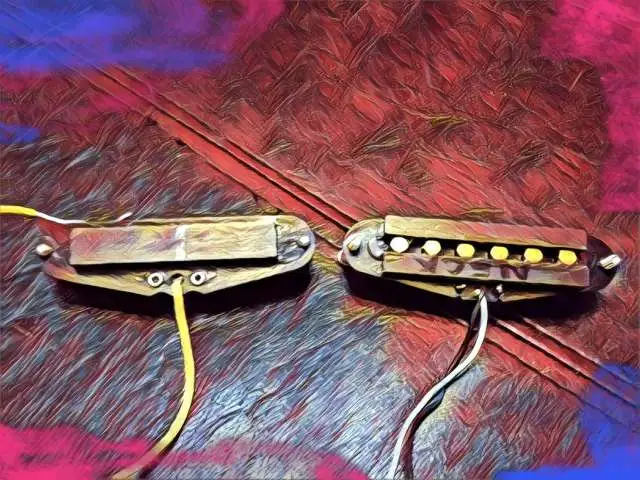More than anything else, it’s the pickup that defines the sound of your guitar. Yes, the wood, the build quality and the strings all play a role in shaping your instrument’s sound, but the pickup is that one component that can completely change a guitar’s sound signature.
In this guide, we’ll look into the importance of guitar pickups, and how you can choose the right one to craft the perfect tone for your style.
Guitar Pickups: A Definition
A guitar pickup is what turns the vibrations of guitar strings into electrical signals. The signals are then sent to an amplifier, which makes them loud enough for you to hear. Pickups have been around since the early 1930s; they were created by George Beauchamp while he was working at Rickenbacker.
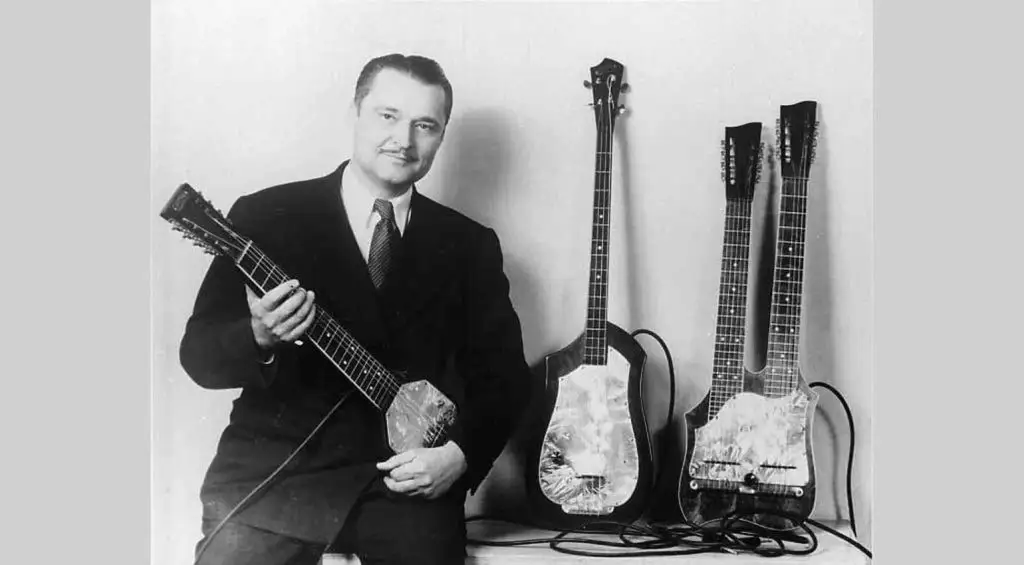
They're used in both electric and bass guitars, and you’ll usually find them between the end of the fingerboard and the bridge. Early electric guitars usually had only one pickup, while most modern guitars have two or three.
While one pickup will do the job just fine, multiple pickups offer more variety. For instance, if you play a string near the bridge and then near the fingerboard, you'll hear two very different tones. This gives guitarists more sounds to work with, which is great if you want to shape a unique sound signature.
How do Pickups Work
The pickup works with a magnet, usually made from alnico (a mix of aluminum, nickel, and cobalt) or ceramic, that creates a magnetic field. Fine copper wire is wrapped around this magnet, and when a guitar string vibrates within the magnetic field, it “disturbs” this field.
This disturbance produces a tiny electrical current in the coil. This process is called electromagnetic induction, and the resulting sound depends on multiple factors: the type and strength of the magnet, string spacing, the number of wire turns, the wire itself, the design and size of the pickup, and the pickup's impedance (measured in ohms).
The Different Types of Guitar Pickups
Let's look at the different types of pickups you can come across and their unique characteristics.
Single Coil Pickups
Single-coil pickups have a single coil of wire around each pole piece, which brings to life a bright and clear sound. They create a thinner and characteristic signature: a "twang" you won’t find anywhere else.
Typically, you'll find single-coil pickups on Fender guitars, which have two pickups: one near the neck and one near the bridge. The neck pickup offers a deeper sound, while the bridge pickup gives a higher pitch.
The downsides: these pickups can make a lot of unwanted noise. Some musicians like it because it has a vintage feel, but other pickups are definitely less noisy.
Humbucker Pickups
Humbuckers come with two coils wound in opposite directions around a central magnet. This particular design cancels out unwanted noise, which gives guitarists a louder and noise-free sound compared to single-coil pickups.

They work really well for heavier music (rock, hard rock, and metal), but they’re used across genres. Bluesmen use them because of their warm and thick sound, and their natural soft and smooth tone makes them perfect for hollow-body guitars and jazz guitars where a clean sound is critical.
Iconic Gibson guitars like the Les Paul, SG, and ES-335, all come with humbuckers. Sometimes guitars will have both single coils and humbuckers. The most common setup is a humbucker in the bridge with single coils in the middle and neck, but there are multiple options to mix and match different pickups.
P-90 Pickups
The P-90 is a unique type of single-coil pickup: a mix between the single-coil's bright sound and the humbuckers’ warm tone. Compared to both, the P-90 pickups offer a more neutral sound.
P-90 pickups make nowhere near as much unwanted noise as normal single coils; that’s because, just like humbuckers, they use two bar magnets. The result is a clear tone but without the extra noise.
They’re a great choice if you’re into bright and clean sound signatures because, compared to straight humbuckers, they won’t distort easily and still deliver a strong high end.
Hot Rails Pickups
These are humbucker pickups that fit into a single-coil space, which means you can have a humbucking sound in a single-coil guitar.
If you want to try a fuller and warmer sound but have a single-coil guitar, this is a great option. However, the sound signature of your instrument will change quite dramatically.
Sustainiac Pickups
Here’s an option for those into more experimental genres. Sustainiac pickups make notes last longer: when the sustainer is off, they work like regular pickups, but when turned on, they use an electromagnetic field to make the strings vibrate, which creates a prolonged sustained sound.
I’ve seen players using them live, and while it takes some time to get used to them, these pickups are an interesting option if you’re into immersive soundscapes.
Mini-Humbuckers
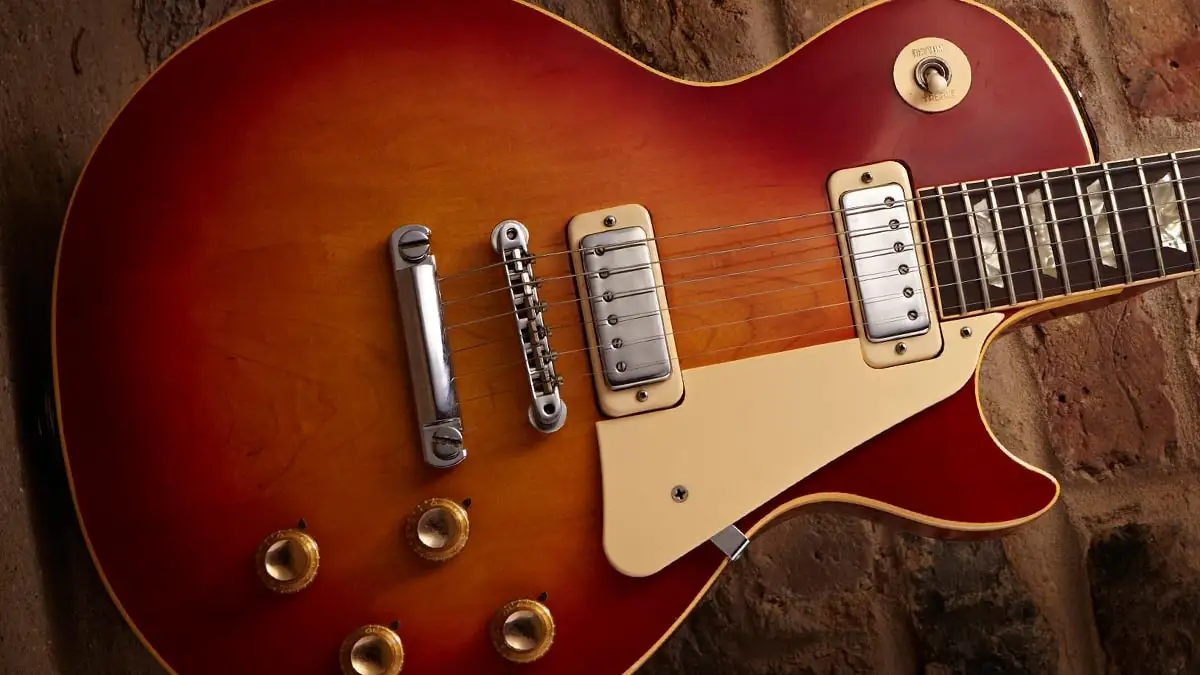
Mini humbuckers are interesting because they’re small, and therefore can fit into spaces where normal humbuckers wouldn’t. In terms of sound, they strike a balance between the warmth of humbuckers and the brightness of single coils.
You find these pickups in many guitars like the Gibson Les Paul Deluxe, Epiphone, Silvertone, and Firebirds. They’re perfect for all music styles, from rock and blues to jazz and beyond.
Active vs. Passive Pickups
A passive pickup is the most common type of guitar pickup, so much so that people usually just call it "pickup". It’s basically the type of pickup we’ve been talking about so far. Now it’s time to introduce an alternative to this traditional pickup.
Active pickups are wound with weaker coils but have built-in electronics that boost the signal with a battery. They offer several benefits: stronger output, better sustain, and consistent tone, which is why they’re popular in heavy metal music. But they’re also more complex and require a battery.
Active pickups come in both humbucker and single-coil types and are generally very quiet.
Active Pickups
How they work: They’re similar to regular pickups but use battery-powered electronics to improve the sound and make it louder.
How they sound: They produce a clear and full tone with low noise, even with long cables.
Why you’d want them: They offer a powerful sound, especially with distortion.
Some examples: EMG 81/85, Fishman Fluence Modern, Seymour Duncan Blackouts, ESP Designed ALH-200.
Passive Pickups
How they work: They don’t need extra power to work.
How they sound: They offer a smooth and vintage tone but can sound darker and less clear in certain situations.
Why you’d want them: They create a more organic sound, are easier to use and don’t require batteries.
Some examples: P-90, Seymour Duncan JB (SH-4), DiMarzio Super Distortion, Fender Custom Shop '69 Strat Pickups, Gibson Burstbucker
The Wiring Types: Split Coil vs. Coil Tap
Coil splitting and coil tapping are both interesting ways of customizing your sound signature, but there’s a lot of confusion as to what these terms actually mean.
When we talk about coil splitting, we’re dealing with a humbucker pickup that lets you turn off one of its coils, which makes it act like a single-coil pickup.
This gives you both single-coil and humbucker sounds in one guitar. Most modern pickups come with four wires (two for each coil and a ground wire), which allows you to switch off one coil using a push-pull knob or a toggle switch.
A coil tap, on the other hand, is found in single-coil pickups and has an extra wire that provides two different output levels, one full and one lower. You can also switch to the lower output using a push-pull knob or toggle switch. This allows you to play louder for solos and then switch to a lower output for softer playing when needed.
Finally, another couple of things you should be aware of:
- Series vs. Parallel Wiring: How humbucker coils are connected. Series wiring produces a thicker tone, while parallel wiring gives you a more articulate sound.
- Out-of-Phase Wiring: Creates a characteristic scooped-midrange tone by reversing the phase of one pickup relative to the other.
The Magnet Types: Alnico vs. Ceramic
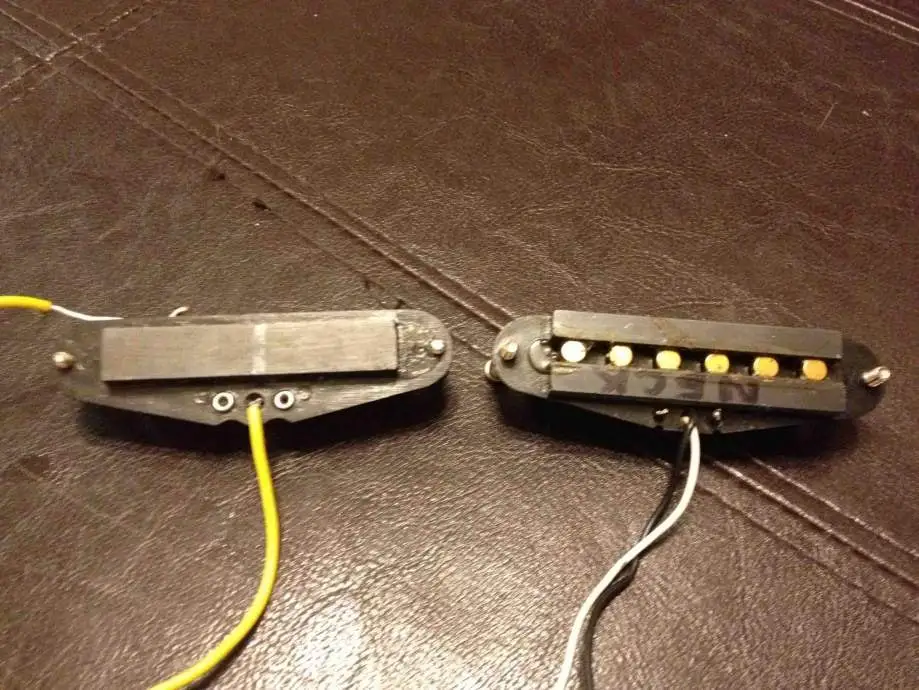
Pickup magnets are what magnetize the strings of a guitar, which allows the pickup coil to create a signal that can be amplified. There are many types of magnets used in pickups, and each one gives a unique tone.
Let’s take a look at the most popular ones:
Alnico II: This magnet offers a clear and organic sound that emulates the original PAF humbuckers. It has a sweet tone and naturally softens harsh high frequencies; therefore, it works well for clean sounds but also offers great note separation when using distortion.
Alnico III: This is the weakest magnet because it has less cobalt, which means it has less impact on the strings. Its sound signature is warm and clear, and many guitarists like to use an Alnico III neck pickup with an Alnico II in the bridge position.
Alnico IV: If you're looking for a brighter and sharper sound, Alnico IV magnets are for you. They naturally highlight higher notes and make them sound clearer and more lively, which is why they're so popular in heavier genres like rock and metal.
Alnico V: Hotter and "edgier" than the Alnico II and III, Alnico V works really well if you want to create a punchy sound with a warm midrange. Perfect for distortion lovers and lead guitarists.
Alnico VIII: This magnet is often neglected but is a great alternative to the most common magnets. The Alnico VIII combines the power of a ceramic magnet with the warmth and harmonics of Alnico V, enhancing the guitar's natural sound while providing a strong output.
Ceramic: Ceramic magnets give you a powerful sound with tight low ends and aggressive midranges. They're a modern option that tends to give more importance to power and loudness than warmth, which is why they're popular in metal genres.
Acoustic Guitar Pickups
Acoustic guitars use different types of pickups than the ones we've talked about so far. Just like with electric guitars, there are a few options for adding a pickup to your acoustic instrument, so let’s take a look at the most common options:
Transducer Pickups
Also called piezo pickups, transducer pickups are usually placed under the guitar’s saddle or on the back of the guitar top. These pickups turn the vibrations of an acoustic guitar into electrical signals, bringing to life a sound that’s more natural than the one created by magnetic pickups.
Soundboard Transducers
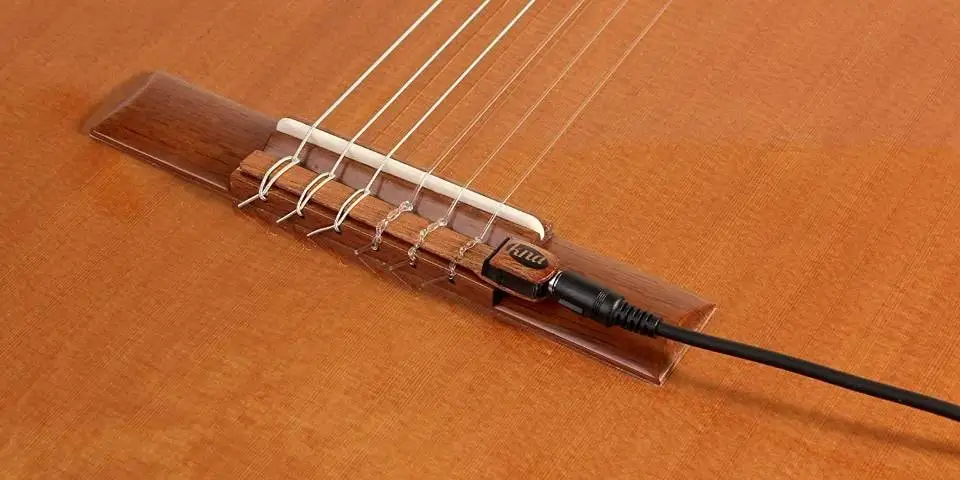
These are a type of piezo pickup, but attached to the top of the guitar instead of being installed inside. They create a warm and rich tone, but most importantly, they can be added or removed in seconds.
Magnetic Soundhole Pickups
Magnetic soundhole pickups use electromagnetic induction, just like electric guitar pickups, and can come in single-coil and humbucking types. Magnetic pickups can be installed without altering the guitar, but they produce a sound more like an electric guitar. Bear in mind that they require steel-stringed guitars because they won’t work with nylon strings.
Microphone Pickups
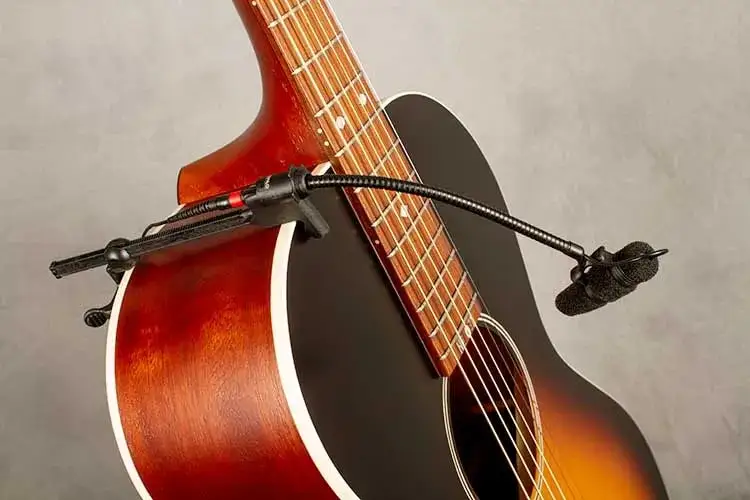
Microphone pickups for your acoustic guitar are a great way to capture its natural sound, but they can also pick up a lot of unwanted noise and cause feedback.
Final Thoughts
And that's all there is to say about guitar pickups! I hope this guide will help you choose the perfect pickup for your needs.
My final recommendation is to make the most of what you already have: explore the tones of your guitar pickup thoroughly before replacing it with a different one. Once you have fully explored the potential of your musical instrument, you'll be in a better position to assess which guitar pickup can enhance its qualities.
Have fun!


